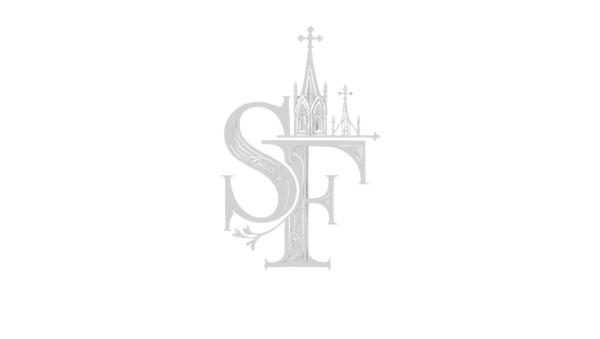
Gothic cathedrals are more than masterpieces of stone and stained glass, they are living chronicles of human history. Within their walls, centuries of prayer, grief, and devotion have left an invisible presence, as if every whispered hymn and tolling bell still lingers in the air. Their spires stretch heavenward in bold defiance of time, yet their vast shadows stir darker imaginings, whispers of the supernatural.
Legends tell of spectral monks gliding through cloisters, unseen choirs singing in empty naves, and mysterious footsteps echoing long after the congregation has gone. To many, these cathedrals feel less like monuments and more like thresholds, places where the boundary between the earthly and the otherworldly is unusually thin.
But what are we truly encountering when we step into these haunting spaces? Are the stories of phantoms born from real encounters, or from centuries of folklore shaped by fear, faith, and imagination?
Echoes of the Past in Sacred Walls

Cathedrals are built not only on stone foundations but on the lives and losses of countless generations. Wars, plagues, pilgrimages, and rituals all left their mark. Every echo and shadow seems to carry the weight of history, and it is no wonder that stories of ghostly figures and unexplained sounds have endured.
🕯️ York Minster – visitors have reported the sighting of a ghostly soldier, believed to be a Roman centurion, reminding us that the cathedral stands on the site of an ancient fortress.
🕯️ Notre Dame de Paris – legends whisper of shadowy figures said to roam the towers, echoing the cathedral’s turbulent past of revolution, fire, and endless watch over the city.
🕯️ Cologne Cathedral – said to be haunted by the spirit of its master mason, who, according to legend, made a pact with the devil to complete the cathedral’s design.
🕯️ Westminster Abbey – ghostly monks are said to walk the cloisters at night, chanting prayers that vanish into silence when approached.
🕯️ Chartres Cathedral – built on a site sacred long before Christianity, it is often tied to stories of ancient spirits and strange energies said to linger beneath its crypts.
These tales may be dismissed as folklore, yet they add another layer to the experience of stepping inside a Gothic cathedral, where one feels not only the weight of the stone but also the unseen presence of centuries past.
Folklore Shaped by Fear and Faith

The Gothic style itself adds power to these legends. Towering vaults, flickering candlelight, and echoing acoustics create an atmosphere ripe for the imagination. In the medieval mind, every unexplained sound might be divine, or demonic.
For those who entered, cathedrals were thresholds between earth and eternity. Shadows cast by stained glass seemed alive, statues of saints could appear to look down with judging eyes, and a sudden chill in the air might be read as the presence of the holy or the damned.
Whispers of hauntings often acted as warnings or moral lessons. A phantom priest at York Minster was thought to remind villagers of unrepented sins. At Cologne, tales spoke of the Choir of the Damned. At Chartres, stories tied ancient spirits to the sacred ground beneath its crypts.
Even the architecture seemed to encourage the supernatural. Grotesques and gargoyles, carved as guardians, were thought to draw spirits close. Candlelight dancing across ribbed vaults and cloisters created the illusion of movement, giving rise to stories of wandering monks, restless nobles, or angels glimpsed at the edge of sight.
In such spaces, belief needed no proof. Mystery, fear, and faith intertwined, ensuring that every shadow could hold a story.
Between Belief and Imagination

Are Gothic cathedrals truly haunted? Science offers explanations. Vast stone walls and lofty vaults distort sound, creating echoes that mimic whispers or footsteps. Drafts slipping through stained glass, the creak of ancient timbers, or the toll of distant bells can all appear ghostly. Combined with centuries of folklore and human imagination, it is little wonder that tales of hauntings endure.
Yet when one stands alone in a cathedral, candlelight flickering against vaults and arches, the line between fact and folklore feels fragile. The sheer scale, the interplay of light and shadow, and the solemn stillness awaken feelings that logic cannot dismiss. Even the most sceptical visitor may sense unseen eyes, as if history itself lingers in the air.
Perhaps the true power of these hauntings lies not in their reality but in their effect. Awe at human ingenuity, fear of the unknown, reverence for centuries of devotion, these are the very emotions Gothic builders sought to inspire. The legends, whether real or imagined, become part of the cathedral’s architecture, woven into stone, glass, and story.
Whether fact or folklore, tales of haunted Gothic cathedrals remind us that these buildings are more than monuments. They are living stories shaped by faith, imagination, and mystery. Haunted or not, their legends ensure that these cathedrals remain places where history still breathes in the shadows.
Further Reading & Research
Philip Ball, Universe of Stone: A Biography of Chartres Cathedral (2008)
Roland Smith, Gothic Cathedrals: A Guide to the History, Places, Art, and Symbolism
Haunted Churches of England – English Heritage Blog
Articles from Historic UK and Atlas Obscura on haunted sacred sites
Spires and Facts is an independent platform created for educational and informational purposes only. This article has been compiled from publicly available sources to share knowledge and inspire curiosity about Gothic architecture and history. We are not affiliated with, endorsed by, or sponsored by any of the organisations, websites, or individuals mentioned here. Any external links are provided for reference only and do not imply promotion or partnership. Readers are encouraged to use their own discretion when exploring further resources.

